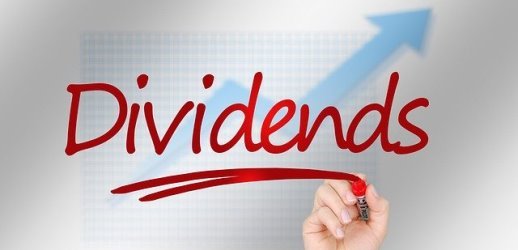Is BND The Best Vanguard Bond Market Index Fund?

Let’s head into the bond world today and work through a BND review.
BND is the ticker symbol for the Vanguard Total Bond Market ETF (NASDAQ: BND). So, what’s my reason for publishing a BND review?
BND Review
First, BND is one of the core bond holdings in my investment portfolio. Furthermore, I recently recommended BND to a friend.
I suggested she invest her Roth IRA into 2 exchange-traded funds. 50% allocated to BND. And 50% allocated to the Vanguard Total Stock Market ETF (NYSEARCA: VTI).
My friend is very busy, and she needed a simple investment strategy. Following my suggestion, she has an easy-to-manage 2 Vanguard fund portfolio.
Are you interested in more about my friends investing story? And specifically about the Vanguard Total Stock Market ETF (VTI). Then, check out my VTI ETF review.
I bring this up because you too may be interested in a simple, easy-to-manage investing strategy. If so, give this BND review, and my VTI review a good read.
And consider allocating your investments 50/50 to these 2 exchange-traded funds. Or an asset allocation appropriate for your age and risk tolerance. That is if this approach meets your personal finance and investing objectives.
No further delays. Let’s dig into the Vanguard Total Bond Market Index Fund review right now.
Disclosure: At no cost to you, I may get commissions for purchases made through links in this post.
ETF Definition
Let’s start with the basics. I will summarize the definition of an ETF from Investopedia.
An exchange-traded fund (ETF) is a collection of securities—such as stocks or bonds—that tracks an underlying index.
An ETF is called an exchange-traded fund since it is traded on an exchange just like individual stocks and bonds. The price of an ETF’s shares will change throughout the trading day as the shares are bought and sold on the market.
Open-end mutual funds are similar to ETFs. They are also a collection of investment securities. But in contrast, they are priced and trade only once daily after the markets close.
ETF Further Explained
So, make one small investment in your brokerage account. And you get immediate ownership of many stocks or bonds rather than just one.
Thus, BND provides instant diversification. And that is a big difference between buying a single bond versus investing in Vanguard’s BND ETF.
So, we are talking about bonds here. Let’s ensure we understand exactly what a bond is before we move further with our BND review.
What Is A Bond?

A bond is a loan made by an investor to a borrower. Usually, the borrower is a corporation or government entity.
First of all, the investor can also be thought of as a lender. Furthermore, a lender has money and desires to loan it to an entity. Finally, the borrower can use the money to fund its operations.
The lender has 2 primary objectives. First of all, earn interest payments on the bond. And get paid back when the bond comes due.
It’s not much different than loaning money to a friend. You want to get paid interest income on your loan. And you want to get paid back the amount you loaned at an agreed-upon time in the future.
So, in its most simple terms, a bond is an I.O.U. between the lender and the borrower. However, bond details are much more formal than a loan between you and a friend.
All the “fine print” is laid out in legal documents.
Bond details include when the principal must be paid back to the lender. Other details usually include the terms for the borrower’s variable or fixed interest payments. And what happens if the borrower cannot pay the interest or the principal on the agreed-upon dates.
So, we know what an ETF is. And we understand bonds.
Next, let’s start putting these topics together as they relate specifically to this BND review.
Our ETF definition mentioned that BND seeks to track an index. Let’s talk more about the index next.
BND Tracks An Index
What index does BND track? The BND index is the Bloomberg Barclays U.S. Aggregate Float Adjusted Index.
This index is also called the Agg. It is a broad-based bond market index representing intermediate-term investment-grade bonds traded in the United States.
Source: Wikipedia – Bloomberg Barclays US Aggregate Bond Index
The index includes government securities, mortgage-backed securities, asset-backed securities, and corporate securities. It seeks to simulate the universe of intermediate-term investment-grade bonds in the U.S. market.
Furthermore, the Agg consists of securities with at least one year to maturity. Finally, bonds in the index must have an outstanding par value of at least $100 million.
Source: Investopedia – What Is the Agg?
So now, we have our foundation knowledge set in place. First of all, we know what an ETF is. Furthermore, we know what a bond is. Finally, we understand which bond index the BND ETF seeks to track.
Learning about investing can be fun. But let’s move on.
Next, we will head to Vanguard and see what they have to say about their own BND ETF.
BND ETF Overview From Vanguard
Here is what Vanguard has to say about BND…
The fund’s investment objective is to track the performance of a broad, market-weighted bond index. Specifically, BND:
- Provides broad exposure to the taxable investment-grade U.S. bond market
- Excludes inflation-protected bonds and tax-exempt bonds
- Offers relatively high potential for income from an investment portfolio of bonds
- Limits portfolio volatility since the share price tends to rise and fall modestly
- It may be appropriate for medium to long-term financial goals
- Is suitable for diversifying the risks of stocks in a portfolio
BND Holdings
BND has nearly 10,000 individual bond holdings in the portfolio. That’s right; you get thousands of bonds with one purchase of BND.
The 10 largest holdings comprise a relatively small percentage of the BND ETF. So, it’s hard to get a feel for the composition of the ETF from the top 10 holdings.
I think we can get a better understanding of the fund by looking at the sectors represented. What I mean is the market sectors in which the borrowers operate.
Table 1: Vanguard Total Bond Market Index Fund Top Sectors
| Issuer Sector | % of BND |
| U.S. Treasury/Agency | 46% |
| Corporate and Other | 31% |
| Mortgage-backed | 20% |
| Foreign | 3% |
| Total | 100% |
By looking at table 1, it’s clear that U.S. government debt represents a large component of the fund’s assets.
This illustrates an issue with the Vanguard BND ETF, in my opinion. What’s that? U.S. government debt comprises a large chunk of the U.S. bond market.
Since BND follows along as it tracks the index. Therefore, the fund is somewhat concentrated in bonds issued by the U.S. government.
For now, it’s not a big risk or concern. First of all, the U.S. government is very credit-worthy. Secondly, for now, treasury debt is suitable for a defensive approach to investing.
But you never know what might happen. Especially as the U.S. piles up more and more debt every day of the year.
Let’s move on to BND’s distributions. I’m an income investor at my core. Regular readers know I love my dividend payments from stocks.
So, we will discuss that topic next. To start, I want to answer a typical question some bond ETF investors may have about dividends.
Do Bond ETFs Pay Dividends?

The short answer to this question is yes. Bond ETFs pay dividends. But I’d like to explain a little more.
The income paid to investors or lenders from individual bonds is called interest or interest income.
But collectively, when a fund holds multiple bonds, the interest from each bond is accumulated. And periodically paid out to investors holding the ETF. When this is done, the passive income is a dividend distribution by the stock.
Next, let’s talk about BND dividends in detail.
Does BND Pay Dividends?
Yes. BND pays a dividend. Just like the average bond ETF, as I explained in the last section.
BND’s dividend comes from 2 different sources.
The primary source is the interest paid on each bond.
The second source is generated from realized capital gains on the fund’s bond holdings.
Capital gains are realized when 1) a bond held in the ETF is sold or matures, and 2) the price at that time of sale or maturity is higher than the original price paid for the bond.
How Often Does BND Pay Dividends?
BND pays monthly dividends. For a total of 12 dividend payments each year.
The first 11 dividend payments during the calendar year are composed of interest from the bonds in the fund. The 12th and final dividend payment includes the last month’s interest and realized capital gains from the entire year if there are any.
The amount of each month’s per share dividend payment is different. It depends on which bonds in the BND portfolio pay interest. And the timing of when they do so.
That being said, the monthly dividends paid are fairly similar. So, if you need a consistent monthly dividend payment to cover your living expenses, then BND may be a good option.
Vanguard Total Bond Market Index Fund Dividend Rate
Over the past calendar year, BND’s cumulative dividends (excluding capital gains) paid per share were $1.81.
You can see the most up-to-date distributions here.
BND Dividend Yield
This dividend payout translates to a 2.5% BND dividend yield at the recent BND ETF share price.
One thought about the current BND dividend. Versus what I expect moving forward.
What do I anticipate? I expect the BND dividend per share and dividend yield to increase. Why is that?
Because of inflation and higher interest rates.
Interest rates will probably continue rising in the United States after dropping to all-time lows after the pandemic. As a result, when bonds in the BND portfolio mature, they will be replaced with bonds having higher interest rates.
Higher interest rates mean higher interest payments. And those interest payments will fund a larger monthly dividend distribution from BND.
That is my forecast. But only time will tell if I am correct.
When Is The BND Dividend Pay Date?
During February through December, the dividend payable date is usually on or around the 4th business day of the month. A second dividend is paid late during the last week of December to bring the total payments for the year to 12.
As an investor in BND, you must complete your purchase before the ex-dividend date to receive the next dividend payout. BND’s ex-dividend date falls on the 1st business day of each month from February through December. The year’s last dividend payment at the end of December comes just before the Christmas holiday.
BND Performance: Total Return

During the last 10 years through the end of 2022, BND’s investment returns have been what you might expect from an intermediate-term investment-grade bond fund. It has averaged about 1% per year.
Since its inception in 2007 through the end of 2022, BND has returned about 2.8% per year.
You can view here the recent performance information.
Looking forward, I believe BNDs returns will be higher only after interest rates peak.
Since bond prices typically move in the opposite direction of interest rates. As interest rates rise. Bond prices will fall. Limiting total returns until rates stabilize.
Once again, this is a forward-looking statement. And there is no guarantee about the future. I can only guess where interest rates are headed.
On the other hand, next, we have something I am certain about…
BND Expense Ratio
Investment expenses are an area where ETFs in general and Vanguard specifically offer high performance. That is the area of low costs.
BND’s expense ratio is a super small .03%. In other words, if you have a balance of $100 in BND for the year, Vanguard will charge you only 3 cents. A $1,000 balance will cost you 30 cents. And that is for the whole year!
You get the idea. This is truly low-cost investing at its finest.
Beyond the ultra-low Vanguard management fee, don’t forget to buy and sell stocks and ETFs for free. There is no need to pay a commission when you buy BND or any other ETF.
I trade for free using the Webull app. And you can too. You can open your Webull account here.
Next, let’s compare and contrast BND with other popular bond ETFs.
BND Vs. AGG
AGG is the ticker symbol for the iShares Core U.S. Aggregate Bond ETF.
iShares is a subsidiary of Blackrock, another large asset management company like Vanguard. Blackrock is responsible for issuing and marketing iShares investment products.
In my mind, AGG and BND are very similar. They track the same index. And have virtually identical investment returns.
BND has a slightly lower expense ratio. AGG has been in existence longer. But BND has a larger asset base.
Trying to decide between the two? Well, flip a coin. Or, go with the brand you trust and work with more. Vanguard or Blackrock iShares.
BIV vs. BND
BIV is the ticker symbol for Vanguard’s Intermediate-Term Bond ETF. There is one primary difference between BND vs. BIV.
That being, BIV does not hold mortgage-backed securities (MBS). A mortgage-backed security is a type of asset-backed security secured by a real estate mortgage or collection of mortgages.
This difference gives BIV a greater weighting to other bond sectors. Specifically, U.S. government bonds and investment-grade corporate bonds.
BND vs. BLV
BLV is the ticker symbol for Vanguard’s Long-Term Bond ETF. There are two main differences between BLV vs. BND.
The first difference is the same as the comparison to BIV. BLV does not hold mortgage-backed securities.
The second difference is the term of the bonds held in BLV. BLV holds long-term bonds. While as we know, BND holds intermediate-term bonds.
Long-term bonds have higher interest rates. They generate more interest or dividend income for the investor. On the other hand, long-term bonds carry greater risk.
The 1st risk is credit risk. The longer until a bond matures means that the borrower has to remain solvent for longer.
For example, it’s one level of risk to expect to be repaid by a borrower in 1 year. Versus expecting to be repaid in 30 years.
Unlike 12 months, a lot can go wrong during 30 years. It’s hard to predict the future that far out.
As a general rule, investors dislike uncertainty. And demand a greater return on investment for dealing with that uncertainty.
The 2nd risk is interest rate risk. As I mentioned earlier, bond prices have an inverse relationship with interest rates.
Higher interest rates mean lower prices for bonds trading in the market. When interest rates rise, it means the potential for falling long-term bond prices.
Finally, before we wrap up, I would like to address a few frequently asked questions. One of which I stated in the subtitle of the article.
Is BND A Good Investment?

A good investment always depends on your investment objectives. If your objectives include
- Earning a predictable stream of dividend income
- Having relatively low share price volatility
- Diversifying your investment assets away from stocks and the stock market
- Accepting a very modest long-term return on investment
Then yes, BND is a good investment suitable for an income portfolio, versus a growth investment portfolio.
How Safe Is BND?
BND is on the lower end of the risk spectrum. However, the bonds held in the fund are not guaranteed. Furthermore, we have discussed that losses can mount when interest rates rise.
So, the risk of losing money does exist. But overall, the fund has more safety than many investment options.
Next, understand that bonds held by BND are secured differently depending on the bond.
First of all, U.S. government bonds are backed by the full faith and credit of the U.S. government.
Furthermore, mortgage bonds are secured by tangible assets in the form of real estate.
Finally, corporate bonds held in the fund are issued by businesses with investment-grade credit ratings.
Is BND The Best Vanguard Bond Index Fund?
Once again, the answer to this question depends on your investor profile and money management objectives.
Do you desire just 1 bond fund for your entire investment portfolio? If you answered yes, I think BND is the best Vanguard bond index fund.
On the other hand, the BND ETF has some limitations.
First of all, it is heavily weighted with U.S. government debt.
Furthermore, it holds no tax-exempt, inflation-protected, or higher-yield junk bonds.
Finally, bonds from foreign issuers outside the U.S. represent a small portion of the fund.
So, is a greater level of diversification within the worldwide bond market your goal? If yes, then BND is likely not the best Vanguard Bond Index fund for you.
Okay. Let’s wrap this up by summarizing the facts about BND.
Vanguard Total Bond Market Index Fund ETF (BND) Fact Sheet & Summary
BND is not one of the most fun investments you will find. It is quite boring. But it has a place in diversified investment portfolios.
Here is a quick fact sheet and summary from this article about the Vanguard Total Bond Market Index Fund ETF – BND:
- Intermediate-term bonds across the U.S. bond market held by the fund
- Diversification among about 10,000 bonds
- Good core bond option for a diversified investment portfolio
- Heavily weighted toward U.S. government debt
- Modest dividend yield
- Low cost
- Low initial investment requirement
More Articles That Complement This BND ETF Review
My Favorite Investing & Personal Finance Resources
- Trade stocks for free with the Webull app
- Get stock research from Morningstar
- And stock analysis from Motley Fool
- Or dividend stock recommendations from Simply Investing
- Manage your finances for free with Personal Capital
Author Bio: Tom Scott founded the consulting and coaching firm Dividends Diversify, LLC. He leverages his expertise and decades of experience in goal setting, relocation assistance, and investing for long-term wealth to help clients reach their full potential.